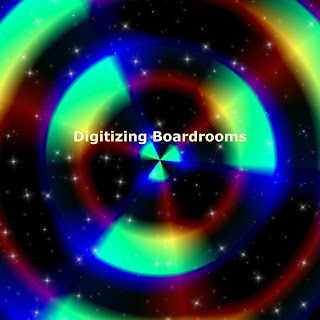Pearl Zhu's Blog, page 1259
January 18, 2017
“Unpuzzling Innovation” Book Tuning: Managing Innovation with Structure
 Digital is the age of innovation. Because innovation is what leads to differentiation. Differentiation creates the business advantage. There are many ways to differentiate and, therefore, there are many ways to pursue innovation. Innovation is to transform novel ideas and achieve its business value. In essence, innovation is, "intentional novelty bringing sustainable benefit." Innovation shouldn’t be serendipity, it needs to be managed in a structural way.
Digital is the age of innovation. Because innovation is what leads to differentiation. Differentiation creates the business advantage. There are many ways to differentiate and, therefore, there are many ways to pursue innovation. Innovation is to transform novel ideas and achieve its business value. In essence, innovation is, "intentional novelty bringing sustainable benefit." Innovation shouldn’t be serendipity, it needs to be managed in a structural way.
The success of the high-innovative organization is not accidental because innovation is a high mature digital capability built via disciplines, structure, processes and practices: Innovative organizations have deployed a range of different management, technology, process, and structural solutions. It starts from managing business goals transparently together with innovation. If you don't have innovation process in place, and if you don’t build the innovation as the critical business capability, it is substantially harder and less likely to be an innovative company for the long run. This means that your processes will be less effective and economic, products more expensive or with lower quality. A defined structure is essential to managing innovation in a corporation, but there's no single structure that will work in every organization. More precisely, you don't structure innovation. You apply principles of approach and vary the resource and tool mix by the ever-changing environment, day to day through the year to year.
Both idea creation and idea management are important to achieve innovation excellence: You need to make sure, that your company has a steady flow of fresh ideas floating in and you have a methodological mainframe that allows you to do that. The process to support the creation of sustainable, systematic innovation can be structured. If social collaboration, innovation management, and development processes are driven by clear strategic goals, the risks are easier to manage. This also enables co-creative processes. Creativity results in ideas but until those ideas are actualized they will remain ideas. It is only after the ideas are implemented that they become innovations. That is innovation management. Because how an organization orchestrates to generate ideas, manages the activities, measures the results, etc, is determined by how that organization has decided to craft the innovation effort. The paradox of innovation management is to strike the right balance between innovation and standardization. Standardization is inside-the-box (ITB), and Innovation is outside-the-box (OTB). Hence, organizations indeed need both, and, in fact, cannot realistically exist without a healthy balance of both in order to achieve innovation excellence
[image error] Define innovation process measurement is also important to demonstrate the growing capability of the organization to deliver more innovation with business impact in the future: What gets measured, gets managed. Metrics is not the end-all solution to management, but simply another set of tools, data, and information sets. Choose the right metrics by deciding which are seen as critical to making progress on, in order to deliver more innovations. The process performance indicators could link to strategy, to make the progress on the percentage of projects in the total innovation portfolio which contain a major part of external innovation. The problem or the potential pitfalls of innovation management is that the KPIs to measure success in business have so often been predominantly financial in nature, but the leading indicators for successful innovation are not financial, the key is to properly measure the right things in the right way, and also keep the measures simple and understandable.
For many organizations, innovation is still serendipitous. The exercise of deciding just what innovation is within each organization IS the single most critical activity of an innovation effort. Innovation is the development of a new combination of available resources, in a way that solves problems of others in a more suitable way. Building innovation as a differentiated business capability by managing innovation with the structure and keep the business process as simple and flexible as possible, because the creative environment is an incubator for innovation, the harmony of people and process can orchestrate the impressive innovation symphony.
Follow us at: @Pearl_Zhu
Published on January 18, 2017 22:18
What is your Digital Intent
 Many organizations are on the journey of digital transformation, but should you spend some time on evaluating your digital intent? Why do you need to change? What is your destination? Who are your change agent? How to get there? And can you analyze pros and cons objectively in order to take a successful digital journey?
Many organizations are on the journey of digital transformation, but should you spend some time on evaluating your digital intent? Why do you need to change? What is your destination? Who are your change agent? How to get there? And can you analyze pros and cons objectively in order to take a successful digital journey?
Start with WHY: Digital transformation is the paradigm shift which needs to start at the mindset level, follow by change attitude and behaviors. Changes could be mandatory, but digital transformation should get going in a more natural way with a steadfast pace, in order to really build a living organic organization with people as cells, and functions like organs. As every successful change program, the digital transformation should follow the 'Golden Circle' starting with the WHY? (motivation -why should you change), then addressing the HOW? (process) and the WHAT? (results) at the end. The big WHY step is about framing the problems - Which problems (not just symptoms) do your organization encounter? A solution is nothing if the problem is not perceived, therefore, creating the awareness of the problem is the first step to making a solution being understood and accepted. Digital transformation starts with the realization that where you are currently no long can deliver the business objective and vision of success for your company and your shareholders, especially for the long term. And it is important to scrutinize your digital intent for the first step. And determining what the future needs to look like (what the transformation must look like) is the next step.
Digital impact assessment: Digitalization opens a new door and connects within department silos, across the walls, across the streets, across the seas, and across the planet. When things connect in this way, any organization wishing to negotiate a successful journey has to understand what the implications of this degree of connectivity mean to them and which impact could digital make for making a leap of their business. Hyper-connectivity is the most critical digital characteristics. They have to understand what it means to their business or organization. Therefore, performing an organizational change impact assessment is very important to understand the 'cultural current state' factors. Then determine what the impacts, risks, and challenges of any proposed changes are. The bigger the change initiative is, the more important to take these into account early rather than late. It’s very important for any high performing organization to get the best alignment and leverage the great human potential that exists or is needed to achieve great results and to tap into the passion of the people! Often change is proposed from one source in a way that people feel excluded from the decision about change and digital transformation. The active engagement of the team to make a transformation roadmap is critical for making successful changes and transformations.
 Change and digital transformation upwards with planning: Change can be an opportunity, but at the end of the day, it needs to be all about moving the business numbers upwards and taking the logical steps for achieving calculable results. Although living in the digital sea, you have to change with the "tide," but have to follow the well-defined principles which would guide you in decisions and how you relate to others, with which speed can you swim in the uncharted water, and how to laser focus on the destination without getting lost. Change is inevitable, but you must know how far to bend. You have to engage your sixth sense to decipher when to make the change and to discern what to throw out and what to keep. But most important of all, you need to have a plan, more precisely planning dynamically to embrace uncertainty and emergent properties. Setting timelines, and sometimes resetting those timelines. Because of the increasing speed of changes, the plans will need modification due to unforeseen obstacles. Digital transformation is a long-term journey, it has to be clearly understood in the map's vision to satisfy both short term gratification and long term outcomes. Furthermore, if you want meaningful change in an organization, it will not really happen until you get buy-in and sponsorship from senior management and participation from bottom up. Without this, you will get chaos and some temporary change, not nature and smooth transformation which can make a leap of the business forward!
Change and digital transformation upwards with planning: Change can be an opportunity, but at the end of the day, it needs to be all about moving the business numbers upwards and taking the logical steps for achieving calculable results. Although living in the digital sea, you have to change with the "tide," but have to follow the well-defined principles which would guide you in decisions and how you relate to others, with which speed can you swim in the uncharted water, and how to laser focus on the destination without getting lost. Change is inevitable, but you must know how far to bend. You have to engage your sixth sense to decipher when to make the change and to discern what to throw out and what to keep. But most important of all, you need to have a plan, more precisely planning dynamically to embrace uncertainty and emergent properties. Setting timelines, and sometimes resetting those timelines. Because of the increasing speed of changes, the plans will need modification due to unforeseen obstacles. Digital transformation is a long-term journey, it has to be clearly understood in the map's vision to satisfy both short term gratification and long term outcomes. Furthermore, if you want meaningful change in an organization, it will not really happen until you get buy-in and sponsorship from senior management and participation from bottom up. Without this, you will get chaos and some temporary change, not nature and smooth transformation which can make a leap of the business forward!
Today’s digital organization simply just can’t stand still. Transformation is a journey rather than a destination. Bridging the 'gap of opportunity' between where you are and want to become is a welcomed challenge. Make the digital transformation journey enjoyable, it could be never ending, because when you reach one destination, the new vision emerges and the new opportunity comes up. Either at the individual or the organizational level, you should never stop learning, being innovative and making progress. That is quintessential of the digital intent.
Follow us at: @Pearl_Zhu
Published on January 18, 2017 22:14
January 17, 2017
The Further-Looking Board
 The digital enterprise consists of an amalgam of socio-systems, techno-systems, bio-systems, and Econo-systems. BoDs as the top business advisor role need to have sufficient knowledge to understand the business ecosystem and sense that the digital transformation is multifaceted, they should have the business vision to predict the emergent trend of business, technology or industry. Therefore, to make the role highly effective, digital BoDs not only need to be forward-thinking, they have to be further looking, thinking longer term, guide the executive team toward the right direction and play the management advising role effortlessly.
The digital enterprise consists of an amalgam of socio-systems, techno-systems, bio-systems, and Econo-systems. BoDs as the top business advisor role need to have sufficient knowledge to understand the business ecosystem and sense that the digital transformation is multifaceted, they should have the business vision to predict the emergent trend of business, technology or industry. Therefore, to make the role highly effective, digital BoDs not only need to be forward-thinking, they have to be further looking, thinking longer term, guide the executive team toward the right direction and play the management advising role effortlessly. The further-looking board helps set digital principles and ensure the enterprise has an appropriate business architecture: Digital business ecosystem is dynamic, nonlinear, and complex, the Board is accountable for the organizational structure and functional design and is responsible for ensuring that the enterprise has an appropriate business architecture. Contribution to the business strategy and business change agenda are the two places where most value can be added by BoDs, and at the earliest stages of the cycle, thereby reducing the investment necessary to realize greater enterprise outcomes or earlier realization of enterprise aspirations. The digital principles as a compass will guide all levels of the organization to operate more like the human body operates with the cells (employees) and organs (Functions) of the organization being able to make a decision in a very organic relationship with its dynamic environment. Overall speaking, trans or interdisciplinary approach can be applied to the management with integrated multi-disciplinary methodology and approach problems via multi-facet way technically, scientifically and culturally.
The further-looking board will ask tough questions about IT because IT investment directly impact the business’s surviving and thriving for the long run: Because IT is an enabler of current and future capability for both the organization and its ecosystem (the market comprising competitors, suppliers and other agents, regulators and so on) much of the board conversation about IT should be framed in respect of the business activities and the ecosystem. BoDs should ask tough questions about IT investment and performance: How does IT enable the business capability development? What developments in the capability and use of information technology are critical to strategic future, and how to responding to them? What limitations are imposed on strategy by the constraints of the information technology currently used by the organization and in the digital ecosystem? Making the inquiries about IT can clarify the business's strategy management capabilities and deepen the understanding of how to maximize the business potential for the long term perspective.
 The further-looking board should participate, or even lead in the area of innovation from an outlier’s viewpoint: No longer are boards sitting in a room and just voting on various policies for business compliance. Digital is the age of innovation, it is one of the requirements of the Board members to participate, or even lead, in constantly suggesting areas of innovation. The further-looking board should both participate innovation management and management innovation. Innovation is too important to leave solely in the hands of the management team without any oversight or guidance. The effective board brings together such tremendous set of skills and experience mix that there are bound to be board members whose ideas could feed into new value creation. Imagine how the companies could change if each Board Director felt his/her mission is to expand the value to the existing or new customers, with new ideas, new products/services; or the new structures. The board should ask how the enterprise measures innovations and how it compares to Best in Class performance and be sure the measurements are accurate from the eyes of the customers and their constituencies.
The further-looking board should participate, or even lead in the area of innovation from an outlier’s viewpoint: No longer are boards sitting in a room and just voting on various policies for business compliance. Digital is the age of innovation, it is one of the requirements of the Board members to participate, or even lead, in constantly suggesting areas of innovation. The further-looking board should both participate innovation management and management innovation. Innovation is too important to leave solely in the hands of the management team without any oversight or guidance. The effective board brings together such tremendous set of skills and experience mix that there are bound to be board members whose ideas could feed into new value creation. Imagine how the companies could change if each Board Director felt his/her mission is to expand the value to the existing or new customers, with new ideas, new products/services; or the new structures. The board should ask how the enterprise measures innovations and how it compares to Best in Class performance and be sure the measurements are accurate from the eyes of the customers and their constituencies.
BoDs as top leadership roles need to envision and lead the organization towards its future. The digital BoD leadership needs to be future oriented and further looking, with the clear business vision and collective and broad range of business perspectives, they can explore the vision and fresh ideas in a spirit of open-mindedness, learning, and innovating.
Follow us at: @Pearl_Zhu
Published on January 17, 2017 23:31
Three Gaps Caused by Bureaucratic Thinking
 The word "bureaucracy" is often seen in pejorative circumstances. Generally speaking, bureaucracy is a system based on a hierarchy of authority and division of workforce functioning in a routine manner. At the industrial age, most of the organizations are running at silos, with the top down organizational structure, bureaucracy thinking is perhaps understandable, because “command and control” is part of the business culture. However, at the digital environment in which business functions become more dynamic, the environment changes quicker than the 'speed' with which rules and processes can be changed, the gaps caused by bureaucratic thinking stop the change and turn to be the mental barrier to stifle innovation and big barriers to making effective decisions. Here are three gaps caused by bureaucratic thinking.
The word "bureaucracy" is often seen in pejorative circumstances. Generally speaking, bureaucracy is a system based on a hierarchy of authority and division of workforce functioning in a routine manner. At the industrial age, most of the organizations are running at silos, with the top down organizational structure, bureaucracy thinking is perhaps understandable, because “command and control” is part of the business culture. However, at the digital environment in which business functions become more dynamic, the environment changes quicker than the 'speed' with which rules and processes can be changed, the gaps caused by bureaucratic thinking stop the change and turn to be the mental barrier to stifle innovation and big barriers to making effective decisions. Here are three gaps caused by bureaucratic thinking.
Bureaucratic thinking divides “thinking” and “working”: With increasing rate of changes, the organization needs to be adapted in such a way that it can respond effectively to the dynamic changes and to variety in the environment. That requires a different kind of 'control,' for example, the control on desired outcomes, keep the end in mind. From a managerial point of view, the 'Command & Control' changes from commanding What to do, When, How and by Whom (micromanagement) towards a 'Command & Control' by defining the desired OUTPUTS, but encourage the alternative and better way to do things, without getting stuck with “we always do things like that” mentality. In digital leading organizations, the division between 'working' and 'thinking' is replaced by combining and integrating 'working and thinking' at the operational level, where people do the real work by unifying mind, heart, and hands. Going forward, it’s all about the balance of avoiding any excess in setting the 'rules,' but remain the necessary control, and ultimately, a proper homeostatic system designed seems to protect an organization's immunity and keep the business healthy. Levels and ways of inertia manifestation could be a criterion for measuring the overall organizational health and digital fitness.
Change gaps: Bureaucratic thinking is a reason behind change inertia or vice versa. If analogizing an organization as a human body, it depends on where the resistance is aimed; if it is aimed against remedy, then it’s a pathogen; but if it’s aimed against the disease, it is from the immune system. The immune system protects and shields us against illness, and it also resists and fights against all agents threatening our well-being. More often, change resistance is an attribute of the pathogen, not of the immune system, and the increase of change resistance causes a concomitant loss of immunity. Bureaucracy = Process Inefficiency. No Bureaucracy ≠ No Rules. When you design business processes by state flow instead of activity flow, and by using various categories of rules instead of the usual 'command and control' rules. That's a real good solution for defining a framework for activities, and at the same time keeping the necessary flexibility in place.
 Energy gaps: Bureaucratic thinking generates negative energy which stops organizations from moving forward. It is about fear of failure; fear of getting out of old habits or fear to lose the status quo. It makes people feel threatened, that’s why learning is stressful. Overcoming personal fear of failure is the greatest challenge. What is resisted is to come out of one's comfort zone and learn something new. At one side, people resist learning, on the other hand, they fear to lose their positions or chances for promotion and growth. In such confusion, when they want to protect themselves, and at the same time, do not want to take a rational step towards learning, they may switch to their primal self, and generate negative emotions which create the energy gap for encouraging mediocrity, professionalism and stop the business from making progress. Management of any type is a complex interaction of many cognitive systems. The bureaucratic thinking (cause of change inertia) and irrational thinking (creating the blind spot in decision making) are the pitfalls at mindset level to stop organizations from a seamless digital transformation. It’s the time to shift these industrial thinking modes to the digital way and create synchronicity in various cognitive systems for improving business effectiveness and maturity.
Energy gaps: Bureaucratic thinking generates negative energy which stops organizations from moving forward. It is about fear of failure; fear of getting out of old habits or fear to lose the status quo. It makes people feel threatened, that’s why learning is stressful. Overcoming personal fear of failure is the greatest challenge. What is resisted is to come out of one's comfort zone and learn something new. At one side, people resist learning, on the other hand, they fear to lose their positions or chances for promotion and growth. In such confusion, when they want to protect themselves, and at the same time, do not want to take a rational step towards learning, they may switch to their primal self, and generate negative emotions which create the energy gap for encouraging mediocrity, professionalism and stop the business from making progress. Management of any type is a complex interaction of many cognitive systems. The bureaucratic thinking (cause of change inertia) and irrational thinking (creating the blind spot in decision making) are the pitfalls at mindset level to stop organizations from a seamless digital transformation. It’s the time to shift these industrial thinking modes to the digital way and create synchronicity in various cognitive systems for improving business effectiveness and maturity.Follow us at: @Pearl_Zhu
Published on January 17, 2017 23:27
Running IT as the “Light Power” to Navigate Digital Transformation
 IT is shifting its reputation from a reactive help desk and support center behind the scene to a proactive innovation engine and change agent leading at front. A CIO must be able to add value to an organization through strategic thinking involves being visionary. Traditional IT in the industrial age is often blamed as the controller to slow down the speed of change. Digital IT is running at much faster speed, and being elevated to the “light power” to navigate digital transformation. Vision -"Begin with an End in Mind," zoom into the future as if it were closer: Determining what the future needs to look like (what the transformation must look like), and then, intrapersonal transformation and interpersonal transformation is needed to achieve organizational transformation. The CIO must be able to work with fellow C-level executives to contribute to the vision and direction of the company. The CIO should be able to envision not only where a company believes it is going, but how it will get there, and how it might be missing out on opportunities because of limitations on understanding. If the business is the ship running on the digital sea, IT needs to be like the light power telling the business about the opportunities and possibilities and that means IT needs to really understand the goals of the business and synchronize with business goals, more specifically, the understanding of what technology can help companies achieve. Digital laggard companies often have a top executive team or BoDs who are comfortable doing things the old way and view IT as purely a support organization. It's very tough for the CIO to drive digital transformation if that is the case. And IT still runs with industrial speed in those organizations toward the darkness and uncharted water, and often lose the direction for reaching the destination.
IT is shifting its reputation from a reactive help desk and support center behind the scene to a proactive innovation engine and change agent leading at front. A CIO must be able to add value to an organization through strategic thinking involves being visionary. Traditional IT in the industrial age is often blamed as the controller to slow down the speed of change. Digital IT is running at much faster speed, and being elevated to the “light power” to navigate digital transformation. Vision -"Begin with an End in Mind," zoom into the future as if it were closer: Determining what the future needs to look like (what the transformation must look like), and then, intrapersonal transformation and interpersonal transformation is needed to achieve organizational transformation. The CIO must be able to work with fellow C-level executives to contribute to the vision and direction of the company. The CIO should be able to envision not only where a company believes it is going, but how it will get there, and how it might be missing out on opportunities because of limitations on understanding. If the business is the ship running on the digital sea, IT needs to be like the light power telling the business about the opportunities and possibilities and that means IT needs to really understand the goals of the business and synchronize with business goals, more specifically, the understanding of what technology can help companies achieve. Digital laggard companies often have a top executive team or BoDs who are comfortable doing things the old way and view IT as purely a support organization. It's very tough for the CIO to drive digital transformation if that is the case. And IT still runs with industrial speed in those organizations toward the darkness and uncharted water, and often lose the direction for reaching the destination.
The best organizations have both vision and future orientation: Enterprises have always been parts of simple or complex eco-systems. In order to function, an enterprise has to be linked to the many and varied ‘touch points’ between itself and the marketplace environment of which it is a part. To accelerate digital transformation, it starts with the realization that where you currently no longer can deliver the business objective and vision of success for your company and your shareholders. IT has the oversight of the underlying business functions and processes, hence, it is also in a unique position to “lighten up” the “invisible part” of the organization, and integrate both “hard” and “soft” business elements to the differentiated set of the business capabilities.Transformation requires first shifting mindset, running IT as the light power will help build the right bridge between IT and business, closing the gap is about doing the basics right to synchronize business and IT and discover the path for digital transformation.
 Stepping out of the old IT box in order to broaden the vision and bring the insight to the business: Information potential directly impacts the business's potential of an organization. The potential value of the business all depends on how the information will be used again in the future and this is often exceptionally uncertain. The art and science of information management are to optimize its usage and achieve its value and full potential. Hence, IT plays a crucial role to unleash the full digital potential of the business as the “light power” to expedite the digital transformation. In addition, to run an innovative IT, the CIO should look to businesses outside their industry to spur the out-of-box thinking and dot-connecting ability; to find examples and opportunities on how other firms addressed similar challenges and implemented different types of products and services to delight customer or reach new markets. So IT can become value-added and shine through the digital transformation.
Stepping out of the old IT box in order to broaden the vision and bring the insight to the business: Information potential directly impacts the business's potential of an organization. The potential value of the business all depends on how the information will be used again in the future and this is often exceptionally uncertain. The art and science of information management are to optimize its usage and achieve its value and full potential. Hence, IT plays a crucial role to unleash the full digital potential of the business as the “light power” to expedite the digital transformation. In addition, to run an innovative IT, the CIO should look to businesses outside their industry to spur the out-of-box thinking and dot-connecting ability; to find examples and opportunities on how other firms addressed similar challenges and implemented different types of products and services to delight customer or reach new markets. So IT can become value-added and shine through the digital transformation.
The lightweight digital technology and IT consumerism and many other factors are creating new challenges and opportunities for enterprises. They are also affecting business capabilities in many ways including but not limited to business relationship management, brand reputation, information management and competitive advantage. A high-innovative and high-performance IT like the light power, can brighten the digital ecosystem for making rapid business changes, increase the speed of digitization, and improve the success rate of digital transformation.
Follow us at: @Pearl_Zhu
Published on January 17, 2017 23:19
January 16, 2017
The Popular Quotes Collection VIII of “Digital Master” Book Series
 “Digital Master” is the series of guidebooks (12+ books) with five pillars to perceive the multifaceted impact digital is making to the business and our society, help forward-thinking organizations navigate through the digital journey in a systematic way, and avoid “rogue digital.” Here is the set of popular quotes for conveying the digital vision and sharing the unique insight about the digital transformation.
“Digital Master” is the series of guidebooks (12+ books) with five pillars to perceive the multifaceted impact digital is making to the business and our society, help forward-thinking organizations navigate through the digital journey in a systematic way, and avoid “rogue digital.” Here is the set of popular quotes for conveying the digital vision and sharing the unique insight about the digital transformation.
 It Innovation: Reinvent It for the Digital Age by Pearl Zhu
It Innovation: Reinvent It for the Digital Age by Pearl Zhu
“Running IT with boldness doesn’t mean IT goes rogue, it means IT becomes more intelligent.” ― Pearl Zhu, It Innovation: Reinvent It for the Digital Age
“The digital philosophy is to live as “customers,” when practicing IT management.” ― Pearl Zhu, It Innovation: Reinvent It for the Digital Age
“In essence, innovation is the use of something that is new and unique, and you are able to create its business value.”― Pearl Zhu, It Innovation: Reinvent It for the Digital Age
“Silos build the wall in people’s minds and tie the knots in their hearts.”― Pearl Zhu, It Innovation: Reinvent It for the Digital Age
“For IT, information management is fundamental, and innovation management is value-added.” ― Pearl Zhu, It Innovation: Reinvent It for the Digital Age
 Thinkingaire: 100 Game-Changing Digital Mindsets to Compete for the Future
Thinkingaire: 100 Game-Changing Digital Mindsets to Compete for the Future
“A child-like mind is full of imagination.” ― Pearl Zhu, Thinkingaire: 100 Game-Changing Digital Mindsets to Compete for the Future
“Insight is vision through the ‘mind’s eyes.” ― Pearl Zhu, Thinkingaire: 100 Game-Changing Digital Mindsets to Compete for the Future
“Self-awareness mind helps you build on your strengths and improve on your weaknesses.” ― Pearl Zhu, Thinkingaire: 100 Game-Changing Digital Mindsets to Compete for the Future
“Judgment and decision making are often considered together.”― Pearl Zhu, Thinkingaire: 100 Game Changing Digital Mindsets to Compete for the Future
“The ultimate aim of learning knowledge is to gain wisdom.” ― Pearl Zhu, Thinkingaire: 100 Game-Changing Digital Mindsets to Compete for the Future
 Unpuzzling Innovation: Mastering Innovation Management in a Structural Way by Pearl Zhu
Unpuzzling Innovation: Mastering Innovation Management in a Structural Way by Pearl Zhu
“Innovation comes from the Latin, “Innovare” - It means to change or alter things that already exist.” ― Pearl Zhu, Unpuzzling Innovation: Mastering Innovation Management in a Structural Way
“The solution to encourage creativity is to maximize use of employees’ brainpower.” ― Pearl Zhu, Unpuzzling Innovation: Mastering Innovation Management in a Structural Way
“Innovative leaders today are digital conductors, problem-solvers, and culture influencers.” ― Pearl Zhu, Unpuzzling Innovation: Mastering Innovation Management in a Structural Way
“Innovative thinkers are explorers and synthesizers of new world views or future views of the world.” ― Pearl Zhu, Unpuzzling Innovation: Mastering Innovation Management in a Structural Way
“Innovation journey is like taking a hiking trip at the trail very few or even no people ever went before, it takes courage and emotional maturity.” ― Pearl Zhu, Unpuzzling Innovation: Mastering Innovation Management in a Structural Way
 Change Insight: Change as an Ongoing Capability to Fuel Digital Transformation by Pearl Zhu“To clear the path, whether that be the elimination of obstacles, closing the blind spots, or to provide guidance, so that the business as a whole can take a digital leap and unleash its full potential.” ― Pearl Zhu, Change Insight: Change as an Ongoing Capability to Fuel Digital Transformation“Perhaps the difficulty in measuring Change Management is that the very thing we are measuring is changing.” ― Pearl Zhu, Change Insight: Change as an Ongoing Capability to Fuel Digital Transformation“It’s probably better and more accessible to measure change readiness rather than change progress.”― Pearl Zhu, Change Insight: Change as an Ongoing Capability to Fuel Digital Transformation“Whatever the measurement system is, it needs to be consistent, repeatable and as unbiased as possible.”― Pearl Zhu, Change Insight: Change as an Ongoing Capability to Fuel Digital Transformation“Change shouldn’t be treated as a singular occurrence when it is an ongoing, continued process and dynamic capability within the organization.”― Pearl Zhu, Change Insight: Change as an Ongoing Capability to Fuel Digital Transformation“You don’t need to be a psychologist to manage change, but you need to understand psychological emotions behind changes.”― Pearl Zhu, Change Insight: Change as an Ongoing Capability to Fuel Digital TransformationFollow us at: @Pearl_Zhu
Change Insight: Change as an Ongoing Capability to Fuel Digital Transformation by Pearl Zhu“To clear the path, whether that be the elimination of obstacles, closing the blind spots, or to provide guidance, so that the business as a whole can take a digital leap and unleash its full potential.” ― Pearl Zhu, Change Insight: Change as an Ongoing Capability to Fuel Digital Transformation“Perhaps the difficulty in measuring Change Management is that the very thing we are measuring is changing.” ― Pearl Zhu, Change Insight: Change as an Ongoing Capability to Fuel Digital Transformation“It’s probably better and more accessible to measure change readiness rather than change progress.”― Pearl Zhu, Change Insight: Change as an Ongoing Capability to Fuel Digital Transformation“Whatever the measurement system is, it needs to be consistent, repeatable and as unbiased as possible.”― Pearl Zhu, Change Insight: Change as an Ongoing Capability to Fuel Digital Transformation“Change shouldn’t be treated as a singular occurrence when it is an ongoing, continued process and dynamic capability within the organization.”― Pearl Zhu, Change Insight: Change as an Ongoing Capability to Fuel Digital Transformation“You don’t need to be a psychologist to manage change, but you need to understand psychological emotions behind changes.”― Pearl Zhu, Change Insight: Change as an Ongoing Capability to Fuel Digital TransformationFollow us at: @Pearl_Zhu
Published on January 16, 2017 22:45
The Monthly Innovation Brief: The Barriers and Pitfalls in Innovation Management Jan. 2017
 Innovation takes a cycle of observing-questioning-connecting-networking-experimenting. From a management perspective, innovation is how to transform novel ideas to achieve its business value, due to the hyper-complexity of modern business, innovation is essentially about reducing the unnecessary business complexity to tackle the complexities of business dynamic. Here is a series of blogs to brainstorm the potential barriers and pitfalls in innovation management.
Innovation takes a cycle of observing-questioning-connecting-networking-experimenting. From a management perspective, innovation is how to transform novel ideas to achieve its business value, due to the hyper-complexity of modern business, innovation is essentially about reducing the unnecessary business complexity to tackle the complexities of business dynamic. Here is a series of blogs to brainstorm the potential barriers and pitfalls in innovation management.
The Barriers and Pitfalls in Innovation Management The Achilles Heel of Innovation Management: Businesses today face fiery competition and rapid digital shift either technologically or economically. Most of the organizations are focusing on improving margins by reducing the bottom-line cost rather than top-line growth; because innovation and risk are proportional, also because very few organizations can master innovation and generally it has a very low success rate. So what is the Achilles Heel of innovation management? And how can organizations improve their innovation capability and reap more business benefit from it?
Three Silo Effects to Stifle IT Innovation Forward-looking organizations are reimagining the digital potential of IT and reinventing IT reputation from a cost center to an innovation engine. However, the majority of IT organizations still get stuck at the lower level of maturity, running as a siloed function. Despite the mountain of evidence pointing the detrimental effects of these silos, they still seem to be quite common in the organization. What are the root causes to silos? Are silos a mere product of organizational design? Or is their nature tied to human nature? What are silo effects which stifle innovation, and downgrade IT effectiveness and performance? What would be some ideas to assist in breaking down silos in an organization where they are present?
Innovation Gaps and Pitfalls: Innovation is the light every forward-looking organization is pursuing. However, for most businesses, innovation is still serendipitous, not so many people like innovation, because innovation stands for risk, and that associated with trouble, and innovation management has overall very low success rate. It is crucial to examine the causes of failure in innovation, the gaps and pitfalls on the way. The objective is to raise awareness of what’s needed to improve the probability of success and make the innovation journey more delightful.
The Root Causes to Innovation Failures Innovation is the light every forward-looking organization is pursuing. However, for most businesses, innovation is still a serendipity, and innovation management has overall very low success rate. The reasons why innovation failure occurs vary widely, but dig further, here are some root causes to fail innovation.
 How to Overcome Innovation Challenges?Innovation is to manage novel ideas and generating business value from them. Even innovation is the light every organization is pursuing, but often the term "innovation" has become so diluted or meaning it is hard to have even a basic conversation about it without problems of definition or interpretation arising - and perhaps in part why all sort of things can feel like innovation - even if they are faking it. So which factors are causes of innovation failure, and how to survive from innovation fatigue and pitfalls?
How to Overcome Innovation Challenges?Innovation is to manage novel ideas and generating business value from them. Even innovation is the light every organization is pursuing, but often the term "innovation" has become so diluted or meaning it is hard to have even a basic conversation about it without problems of definition or interpretation arising - and perhaps in part why all sort of things can feel like innovation - even if they are faking it. So which factors are causes of innovation failure, and how to survive from innovation fatigue and pitfalls?
The “Future of CIO” Blog has reached 1.7 million page views with about 3300+ blog posting in 59+ different categories of leadership, management, strategy, digitalization, change talent, etc. The content richness is not for its own sake, but to convey the vision and share the wisdom. Blogging is not about writing, but about thinking; it’s not just about WHAT to say, but about WHY to say, and HOW to say it. It reflects the color and shade of your thought patterns, and it indicates the peaks and curves of your thinking waves. Unlike pure entertainment, quality and professional content takes time for digesting, contemplation and engaging, and therefore, it takes the time to attract the "hungry minds" and the "deep souls." It’s the journey to amplify your voice, deepen your digital footprints, and match your way for human progression.
Follow us at: @Pearl_Zhu
Published on January 16, 2017 22:24
The Gaps between Knowledge and Wisdom
Knowledge pertains to knowing and to intelligence while wisdom has to do with the soundness of judgment.
 Intellectual transformation is the 'realization of 'knowledge to wisdom. Wisdom is not knowledge; one cannot have wisdom without knowledge, but one cannot substitute wisdom for knowledge as well. Knowing what you do not know is at the very least a large part of wisdom, and far too often sorely lacking in people. Wisdom is knowing the truth of it well enough as to be able to discern that from the choices, as to make the one choice that is seen as a wise choice. Then knowledge is the result of lessons we learned by exploitation of our wisdom! As wisdom encourages to keep on gathering facts and learning knowledge. Wisdom + Knowledge = life, a never ending fact-discovery mission.
Intellectual transformation is the 'realization of 'knowledge to wisdom. Wisdom is not knowledge; one cannot have wisdom without knowledge, but one cannot substitute wisdom for knowledge as well. Knowing what you do not know is at the very least a large part of wisdom, and far too often sorely lacking in people. Wisdom is knowing the truth of it well enough as to be able to discern that from the choices, as to make the one choice that is seen as a wise choice. Then knowledge is the result of lessons we learned by exploitation of our wisdom! As wisdom encourages to keep on gathering facts and learning knowledge. Wisdom + Knowledge = life, a never ending fact-discovery mission.
Knowledge ls learned, and wisdom is earned: Wisdom is a willingness to accept that, there is unknown in life journey: Putting aside all the trained thoughts, systems and boxes, let the open possibility come connect naturally. The way to attain wisdom is to have an open mind, be aware you could be wrong, learn from your experiences and those of others, be aware yours is not the only valid worldview, learn to see the world from different angles. Wisdom is learning what you don't know and then sharing what you have learned. This is acquired over a period of time as you gain experience. Because more often, our own knowledge or knowing is a barrier to knowing more.Wise are those who accept their lack of knowledge and are ready to drop their self-created beliefs systems, preconceived notions.
Knowledge pertains to knowing and to intelligence while wisdom has to do with the soundness of judgment: Many people do wrong things, not because of ignorance, but because of the poor judgment, due to the lack of comprehensive knowledge, bias, or preconceived notions. It is imperative to identify what causes manifestly intelligent people so frequently make such poor decisions. Do they lack independent thinking, critical reasoning or interdisciplinary knowledge? Do they thinking "too fast" without necessary "thinking slowly"? Do they focus too many trivial details, with ignorance of the big picture? Wisdom is to be understood within this context. Wisdom= f(Applying what we think we know, Experience, Learning, Unlearning and relearning, Sharing Knowledge and Experience).
 Knowledge is about gaining some useful information via learning; wisdom is about harmonizing thinking, saying and doing: Mastering what instincts are, how they function and how they interact with human intellect and jointly command everything we do would enable one to consciously manage this subconscious mental trend. Wisdom would necessarily be concerned with communication effectiveness and decision maturity, any lapse in any of these would show a lack of wisdom because their instincts erode a huge portion of their intelligence.The ultimate aim of knowledge is wisdom. Every bit of knowledge we acquire either increases our confidence, or betters our judgment, or then does both.
Knowledge is about gaining some useful information via learning; wisdom is about harmonizing thinking, saying and doing: Mastering what instincts are, how they function and how they interact with human intellect and jointly command everything we do would enable one to consciously manage this subconscious mental trend. Wisdom would necessarily be concerned with communication effectiveness and decision maturity, any lapse in any of these would show a lack of wisdom because their instincts erode a huge portion of their intelligence.The ultimate aim of knowledge is wisdom. Every bit of knowledge we acquire either increases our confidence, or betters our judgment, or then does both.
Filling the gap between knowledge and wisdom is taking the path to growing into high-mature human beings. We have a limited bandwidth and hence choose to pursue knowledge that will benefit us in some way - an eminently logical choice. We become wise when we are humble enough to be aware of and admit what we don't know and share what we know. Wisdom and humility go hand in hand. So we can not only get older but also grow wiser.
Follow us at: @Pearl_Zhu
 Intellectual transformation is the 'realization of 'knowledge to wisdom. Wisdom is not knowledge; one cannot have wisdom without knowledge, but one cannot substitute wisdom for knowledge as well. Knowing what you do not know is at the very least a large part of wisdom, and far too often sorely lacking in people. Wisdom is knowing the truth of it well enough as to be able to discern that from the choices, as to make the one choice that is seen as a wise choice. Then knowledge is the result of lessons we learned by exploitation of our wisdom! As wisdom encourages to keep on gathering facts and learning knowledge. Wisdom + Knowledge = life, a never ending fact-discovery mission.
Intellectual transformation is the 'realization of 'knowledge to wisdom. Wisdom is not knowledge; one cannot have wisdom without knowledge, but one cannot substitute wisdom for knowledge as well. Knowing what you do not know is at the very least a large part of wisdom, and far too often sorely lacking in people. Wisdom is knowing the truth of it well enough as to be able to discern that from the choices, as to make the one choice that is seen as a wise choice. Then knowledge is the result of lessons we learned by exploitation of our wisdom! As wisdom encourages to keep on gathering facts and learning knowledge. Wisdom + Knowledge = life, a never ending fact-discovery mission.
Knowledge ls learned, and wisdom is earned: Wisdom is a willingness to accept that, there is unknown in life journey: Putting aside all the trained thoughts, systems and boxes, let the open possibility come connect naturally. The way to attain wisdom is to have an open mind, be aware you could be wrong, learn from your experiences and those of others, be aware yours is not the only valid worldview, learn to see the world from different angles. Wisdom is learning what you don't know and then sharing what you have learned. This is acquired over a period of time as you gain experience. Because more often, our own knowledge or knowing is a barrier to knowing more.Wise are those who accept their lack of knowledge and are ready to drop their self-created beliefs systems, preconceived notions.
Knowledge pertains to knowing and to intelligence while wisdom has to do with the soundness of judgment: Many people do wrong things, not because of ignorance, but because of the poor judgment, due to the lack of comprehensive knowledge, bias, or preconceived notions. It is imperative to identify what causes manifestly intelligent people so frequently make such poor decisions. Do they lack independent thinking, critical reasoning or interdisciplinary knowledge? Do they thinking "too fast" without necessary "thinking slowly"? Do they focus too many trivial details, with ignorance of the big picture? Wisdom is to be understood within this context. Wisdom= f(Applying what we think we know, Experience, Learning, Unlearning and relearning, Sharing Knowledge and Experience).
 Knowledge is about gaining some useful information via learning; wisdom is about harmonizing thinking, saying and doing: Mastering what instincts are, how they function and how they interact with human intellect and jointly command everything we do would enable one to consciously manage this subconscious mental trend. Wisdom would necessarily be concerned with communication effectiveness and decision maturity, any lapse in any of these would show a lack of wisdom because their instincts erode a huge portion of their intelligence.The ultimate aim of knowledge is wisdom. Every bit of knowledge we acquire either increases our confidence, or betters our judgment, or then does both.
Knowledge is about gaining some useful information via learning; wisdom is about harmonizing thinking, saying and doing: Mastering what instincts are, how they function and how they interact with human intellect and jointly command everything we do would enable one to consciously manage this subconscious mental trend. Wisdom would necessarily be concerned with communication effectiveness and decision maturity, any lapse in any of these would show a lack of wisdom because their instincts erode a huge portion of their intelligence.The ultimate aim of knowledge is wisdom. Every bit of knowledge we acquire either increases our confidence, or betters our judgment, or then does both.
Filling the gap between knowledge and wisdom is taking the path to growing into high-mature human beings. We have a limited bandwidth and hence choose to pursue knowledge that will benefit us in some way - an eminently logical choice. We become wise when we are humble enough to be aware of and admit what we don't know and share what we know. Wisdom and humility go hand in hand. So we can not only get older but also grow wiser.
Follow us at: @Pearl_Zhu
Published on January 16, 2017 22:20
Digital IT Improves Business Visibility and Maturity
 Traditional IT organizations act as an invisible back office and the support function of the business, to keep the lights on, thus, often IT has been perceived as the cost center. Nowadays, information is one of the most valuable business assets, and technology is often the disruptive force of digital innovation. Perhaps the biggest value adds from IT is VISIBILITY for itself and for the business as a whole.
Traditional IT organizations act as an invisible back office and the support function of the business, to keep the lights on, thus, often IT has been perceived as the cost center. Nowadays, information is one of the most valuable business assets, and technology is often the disruptive force of digital innovation. Perhaps the biggest value adds from IT is VISIBILITY for itself and for the business as a whole.
IT provides hindsight, insight, and foresight of the business and overall business visibility: IT allows business departments, stakeholders, and executive clearly see what is happening in the business. From producing Key Performance Indicators (KPIs) to generating reports, to publishing information on a centralized portal. Too many organizations focus on the “T” in IT which is Technology in the past, high performance IT should focus on the ‘I’ for Information, because IT provides hindsight of business operation, customer insight for understanding what the customer really needs or will want, technological vision, and the foresight of the business and overall business visibility. CIO needs to be an enabler of the business strategic objectives. The general expectation from IT has changed. Not only are they being seen as an enabler, they are now mandatory required to give ROI for the investments.
IT needs to increase its own visibility via guiding the company level business conversation, not just being an order taker: There are two categories at the very top of the CIO’s responsibility: Listen to the needs of the company and perform to the ultimate level to meet those needs. Those two have many subcategories. CIOs need to guide the company's conversation to define a clear vision for the IT department. More often this is easier said than done. But once roadmap is defined, keep the executive staff engaged and do so often. Make it clear that the direction and accomplishments of IT are directly affected by the entire company's involvement. Make IT integrated into the company while avoiding making it a separate "stand alone" department. Digital IT should put emphasis on three “I”s: Interaction, Incrementalism, and Improvement. Communication Enforcement in developing a trusted, working relationship with correct stakeholders: The connection between IT and business lies in using the common language to help businesses cross that bridge to IT. They should promote training and robust communication policies that keep enterprise-wide goals in sight, yet do not stifle collaboration and creativity.
 CIOs can provide the visible innovative leadership and support that is required as traditional hierarchies are challenged and dismantled: Digital IT needs to think and act as the effective change agents because IT is overseeing the underlying business functions and processes for driving changes and digital transformation. Success is far more likely if CIOs and IT professionals are seen as integral team players whose efforts add real value to the deployment of collaborative team structures within the organization. CIOs need to rise above the status quo, gain the leadership visibility and take on a new set of activities that have them involved in the strategy development process from the get-go and manage innovation systematically. Innovation is about thinking differently, acting differently, delivering differently, adding value differently, from the status quo. The top leadership team needs to understand that IT as a function is also business related and revenue generating in that the information systems used for business decisions are always being applied to make important decisions for the overall company, and reap the benefit from innovation.
CIOs can provide the visible innovative leadership and support that is required as traditional hierarchies are challenged and dismantled: Digital IT needs to think and act as the effective change agents because IT is overseeing the underlying business functions and processes for driving changes and digital transformation. Success is far more likely if CIOs and IT professionals are seen as integral team players whose efforts add real value to the deployment of collaborative team structures within the organization. CIOs need to rise above the status quo, gain the leadership visibility and take on a new set of activities that have them involved in the strategy development process from the get-go and manage innovation systematically. Innovation is about thinking differently, acting differently, delivering differently, adding value differently, from the status quo. The top leadership team needs to understand that IT as a function is also business related and revenue generating in that the information systems used for business decisions are always being applied to make important decisions for the overall company, and reap the benefit from innovation.
The faster both understand that IT is not just technical, but rather business-driven, the high visible IT can elevate its maturity from “reactive to change” to proactively driving business transformations. IT also helps varying business functions improving visibility and hence enforcing cross-functional communication and collaboration, and ultimately make the entire organization more visible via building a strong business reputation and strengthen the organizational band.
Follow us at: @Pearl_Zhu
Published on January 16, 2017 22:17
January 15, 2017
CIOs as “Chief Inquisitive Officer: A set of Q&As (VIII) for IT Reinventing and Branding
 Modern CIOs face many challenges, it is not sufficient to only keep the lights on. Regardless of which industry or the nature of organization you are in, being a digital leader will need to master the art of creating unique, differentiating value from piles of commoditized technologies and take advantage of the emergent digital trend as well; digital CIOs also have multiple personas, “Chief Innovation Officer,” “Chief Insight Officer,” “Chief Improvement Officer,” “Chief Information Officer,” and here, we discuss CIOs as “Chief Inquisitive Officer,” with a set of Q&As to lead digital transformation.
Modern CIOs face many challenges, it is not sufficient to only keep the lights on. Regardless of which industry or the nature of organization you are in, being a digital leader will need to master the art of creating unique, differentiating value from piles of commoditized technologies and take advantage of the emergent digital trend as well; digital CIOs also have multiple personas, “Chief Innovation Officer,” “Chief Insight Officer,” “Chief Improvement Officer,” “Chief Information Officer,” and here, we discuss CIOs as “Chief Inquisitive Officer,” with a set of Q&As to lead digital transformation.
How to rebrand IT? IT is being treated as a cost center and technology controller for years, because many IT organizations are seen as a help desk and a maintenance center to keep the light on, or simply cannot give a fair accounting of where the money is going in terms of business capability or, more importantly, directly identifying the business value. Now with the accelerating digital speed, IT organizations are at the crossroad, either to reinvent its tarnished image or become irrelevant in the digital age. So the challenge facing IT leaders would how to re-imagining IT and unleash its potential.
 How to Promote IT Effectively? It is no secret that IT can often only be noticed when things are broken, the CIO and his/her team should be the leading persons driving that message of IT value throughout the enterprise. They are, after all, the face of the IT organization. The key challenge is to demonstrate what you provide can help the client achieve some critical purpose of theirs.
How to Promote IT Effectively? It is no secret that IT can often only be noticed when things are broken, the CIO and his/her team should be the leading persons driving that message of IT value throughout the enterprise. They are, after all, the face of the IT organization. The key challenge is to demonstrate what you provide can help the client achieve some critical purpose of theirs.
The digital CIOs need to reimagine IT as the business growth engine and lead changes via inquiries. They need to keep asking open-ended questions such as, "Why? Why not? What If?" They have to focus on guiding the company through the digital transformation, and create unique business value because IT is the significant element of any differentiated business capability and the defining factor for competitive advantage.
Follow us at: @Pearl_Zhu
Published on January 15, 2017 22:59



